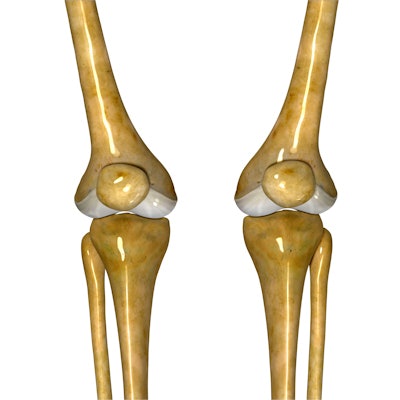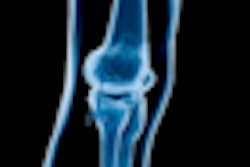
MRI shows that quadriceps tendon autografts lead to better outcomes for anterior cruciate ligament (ACL) reconstruction in adolescents compared with hamstring tendon grafts, according to study results presented July 9 at the joint meeting of the AOSSM and the Arthroscopy Association of North America (AANA) in Nashville, TN.
"An analysis of MRI images of the tissue grafts used for patients who underwent surgery to repair the anterior cruciate knee ligament suggests grafts used from the quadriceps may be superior to tissue grafts from the hamstring," the AOSSM said in a statement.
Hamstring tendon autograft is a common treatment choice for ACL reconstruction in adolescents, wrote a team that included senior author Dr. Daniel Green of the Hospital for Special Surgery in New York City. But quadriceps tendon autografts have been shown to produce better outcomes among this population -- as measured by effective incorporation of the graft into the ligament.
Green and colleagues assessed graft maturity at six- and 12-months postsurgery, comparing MRI signal intensity of both hamstring and quadricep grafts. The group hypothesized that quadricep tendon autografts would have a lower signal than hamstring grafts, which would demonstrate the graft's assimilation.
"The objective of [our] study was to evaluate graft maturity by comparing MRI signal intensity of hamstring tendon autograft and quadricep tendon autografts used in primary ACL reconstruction," the team wrote.
The study included 71 participants under the age of 18. Of these, 38 underwent hamstring grafts and 33 underwent quadricep grafts for ACL reconstruction between 2011 and 2018. All had six and 12-month postoperative MRI exam data available.
Green and colleagues found that there was no statistically significant difference in signal intensity ratio between graft groups on six-month MRI scans. But on 12-month MRI, the group that got quadricep grafts showed a statistically significantly lower signal intensity than the hamstring group (p = 0.029). This group also saw a statistically significant drop in signal intensity ratio between the six- and 12-month postoperative MRI exams (p = 0.045).
This decrease in signal intensity between the two postoperative MRI exams for patients who got quadriceps grafts "suggests quicker graft maturation and improved structural integrity of quadriceps tendon autografts as compared to hamstring tendon autograft," the authors noted.
"This provides evidence that one year postoperatively, quadriceps tendon autografts may have a superior rate of incorporation and synovialization as compared to the hamstring tendon autograft," they concluded.



















